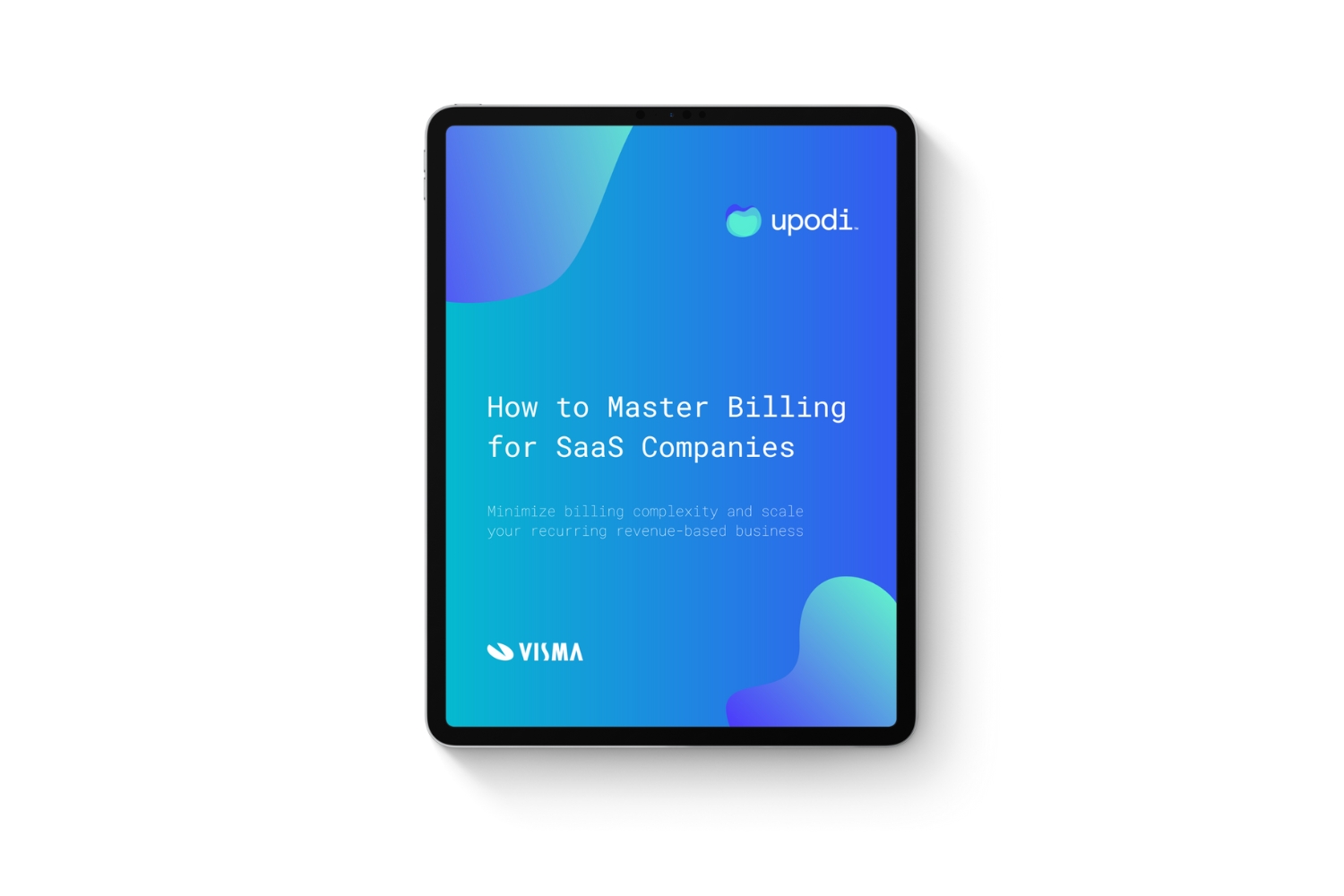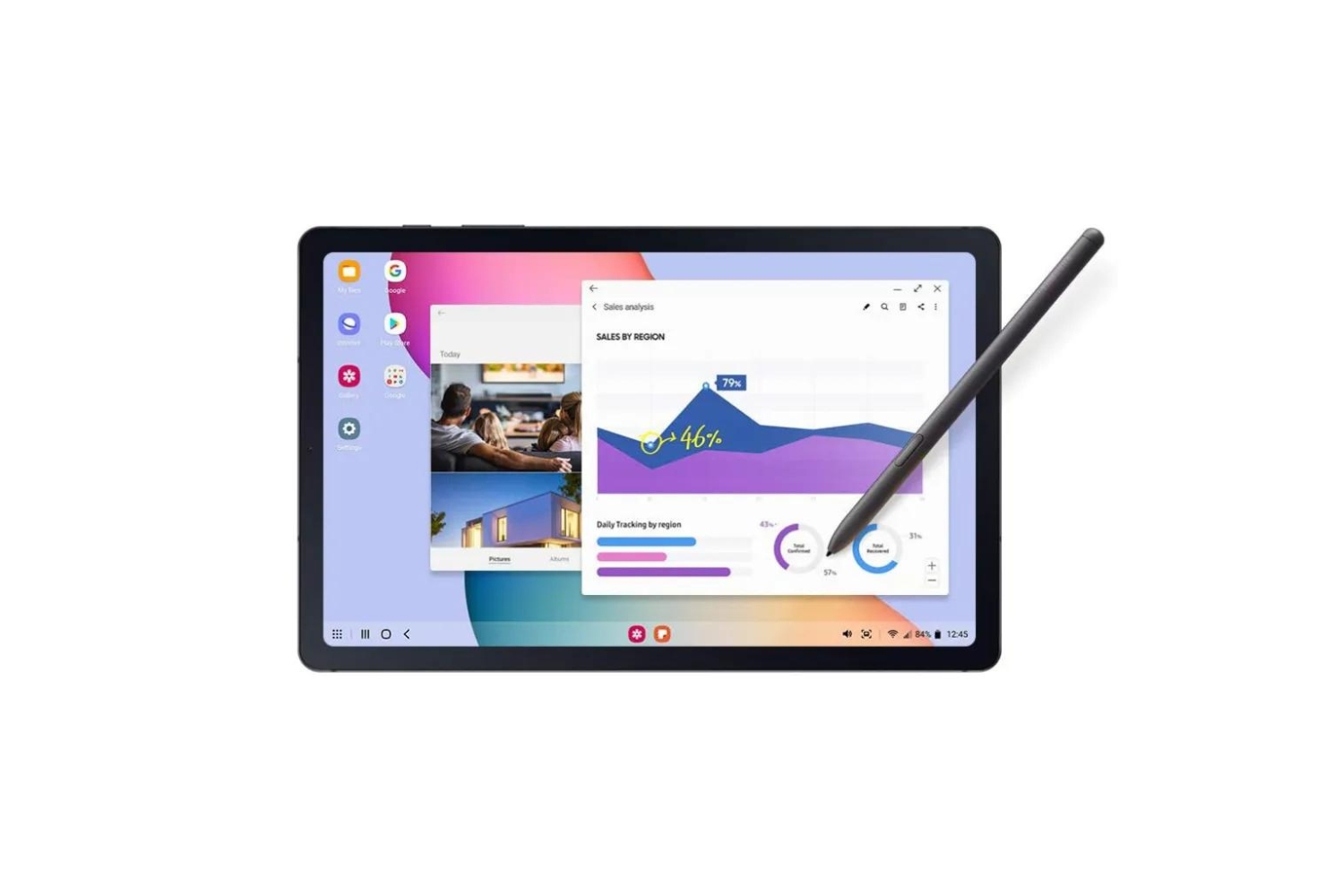Introduction
Welcome to the world of billing, where different industries have their own unique ways of managing financial transactions. In this article, we will delve into the distinctive aspects of billing in the Software as a Service (SaaS) industry compared to billing at a Widget Factory.
While both SaaS and Widget Factory may involve invoicing and collecting payments, the processes and underlying mechanisms can differ significantly. Understanding these differences is crucial for businesses operating in these domains, as it directly impacts their operational efficiency and customer experience.
SaaS companies provide software solutions to customers on a subscription basis, offering them access to a cloud-based platform. On the other hand, Widget Factories manufacture physical goods that are sold directly to consumers or businesses. The variations in their business models and operational workflows result in distinct billing practices.
In this article, we will explore the key differences between SaaS billing and Widget Factory billing. By understanding these variances, businesses can optimize their billing systems, improve customer satisfaction, and streamline their financial processes.
Explanation of SaaS Billing
SaaS billing refers to the process of managing and invoicing customers for subscription-based software services. In the SaaS model, customers pay a recurring fee to access and utilize the software platform. Let’s delve into the key components and characteristics of SaaS billing.
Firstly, SaaS billing is typically based on a subscription model, where customers pay a set fee at regular intervals, such as monthly or annually. This recurring revenue model provides businesses with a stable and predictable income stream.
Secondly, SaaS billing often employs a tiered pricing structure. This means that customers can choose between different subscription plans with varying features and levels of service. These tiers allow businesses to cater to a diverse range of customer needs and budgetary constraints. The flexibility of these pricing tiers is an essential aspect of SaaS billing.
Thirdly, SaaS billing is highly automated. Advanced billing systems and subscription management platforms handle the billing processes, such as generating invoices, tracking payment history, and managing subscriptions. This automation reduces the manual effort required and enhances accuracy and efficiency.
Additionally, SaaS billing often offers self-service capabilities to customers. Customers can manage their subscriptions, upgrade or downgrade their plans, and view billing history through a user portal. This self-service functionality improves customer satisfaction by providing them with greater control and transparency over their subscription.
Furthermore, SaaS billing caters to the needs of a global customer base. It supports multiple currencies and payment methods, allowing businesses to serve customers in different regions with ease. This global scalability is particularly important for SaaS companies looking to expand internationally.
Overall, SaaS billing is characterized by its subscription-based model, tiered pricing, automation, self-service capabilities, and global scalability. With these features, SaaS businesses can efficiently manage their billing processes, provide a seamless customer experience, and scale their operations to meet growing demand.
Explanation of Widget Factory Billing
Widget Factory billing refers to the process of invoicing and collecting payments for physical products manufactured by a Widget Factory. Unlike SaaS billing, Widget Factory billing is centered around the sale of tangible goods. Let’s explore the key components and characteristics of Widget Factory billing.
Firstly, Widget Factory billing revolves around one-time transactions. When a customer purchases a widget from a Widget Factory, they typically pay the full price upfront or at the time of delivery. This differs from the recurring payment structure in SaaS billing.
Secondly, Widget Factory billing often involves inventory management. As Widget Factories produce physical products, they need to maintain stock levels to fulfill customer orders. The billing process is closely tied to the inventory system, ensuring accurate tracking of goods sold and available stock.
Thirdly, Widget Factory billing may involve additional costs such as shipping and handling fees. Since physical products need to be shipped to customers, the billing process takes into account transportation expenses. The customer is usually responsible for covering these costs, which are added to the total amount of the purchase.
Additionally, Widget Factory billing may include the option for customers to choose from different shipping methods, such as standard shipping or expedited delivery. The associated costs and delivery timeframes are factored into the final bill, offering customers flexibility in their shipping preferences.
Furthermore, Widget Factory billing may require additional documentation such as invoices or receipts. These documents serve as proof of purchase for customers and assist in record-keeping for the Widget Factory. In some cases, warranties or guarantees may also be included in the billing process to ensure customer satisfaction and support.
Overall, Widget Factory billing is characterized by its one-time payment structure, inventory management, inclusion of shipping and handling fees, customer choice in shipping methods, and documentation requirements. These elements are vital for Widget Factories to effectively manage the sale of physical products and provide a satisfactory purchasing experience for their customers.
Key Differences between SaaS Billing and Widget Factory Billing
While both SaaS billing and Widget Factory billing involve managing financial transactions, there are several key differences between the two. Understanding these differences is essential for businesses operating in these industries. Let’s explore the contrasting aspects of SaaS billing and Widget Factory billing:
1. Nature of Product: The most fundamental difference between SaaS billing and Widget Factory billing lies in the nature of the product. SaaS companies provide software services accessed through a cloud-based platform, whereas Widget Factories produce and sell physical goods.
2. Payment Structure: SaaS billing typically follows a recurring payment model, where customers pay a subscription fee at regular intervals. In contrast, Widget Factory billing involves one-time payments, where customers pay the full price of the product upfront or at the time of delivery.
3. Inventory Management: Widget Factory billing requires efficient inventory management to keep track of available stock and fulfill customer orders. SaaS billing, on the other hand, does not involve inventory management since it deals with intangible software products.
4. Automation: SaaS billing heavily relies on automation to handle billing processes such as generating invoices, tracking payments, and managing subscriptions. Widget Factory billing, while it may use some automation, typically involves more manual processes, including creating invoices and tracking inventory levels.
5. Global Scalability: SaaS billing is designed to cater to a global customer base, supporting multiple currencies and payment methods. This enables SaaS companies to easily expand their reach and serve customers worldwide. Widget Factory billing may also have global operations, but it may face logistical challenges associated with shipping physical products to different locations.
6. Self-Service Capabilities: SaaS billing often offers self-service portals where customers can manage their subscriptions, view billing history, and make changes to their plans. Widget Factory billing typically lacks this self-service functionality, as it is not directly applicable to the sale of physical products.
7. Customer Experience: SaaS billing focuses on providing a seamless, user-friendly experience to customers by enabling easy subscription management and access to software services. Widget Factory billing emphasizes a satisfactory purchasing experience through factors such as product quality, shipping options, and customer support.
These key differences highlight the diverse approaches in billing practices between the SaaS industry and the manufacturing industry. Recognizing these distinctions is crucial for businesses to develop appropriate billing strategies, optimize operational efficiency, and deliver a superior customer experience in their respective domains.
Scalability in SaaS Billing
Scalability is a key advantage of SaaS billing, allowing businesses to easily accommodate the growing demands of their customer base. Let’s explore how SaaS billing offers scalability and the benefits it provides:
1. Flexible Subscription Plans: SaaS billing allows businesses to offer various subscription plans with different features and pricing tiers. This flexibility enables businesses to cater to customers with diverse needs and budgets. As the customer base grows, SaaS businesses can scale their offerings by introducing new plans or enhancing existing ones.
2. Elastic Resource Allocation: SaaS billing enables businesses to allocate resources dynamically based on demand. With cloud-based infrastructure, SaaS companies can scale their services up or down as needed, ensuring optimal performance and cost-efficiency. This scalability allows businesses to provide a seamless user experience even during periods of high traffic or increased usage.
3. Geographical Expansion: SaaS billing is designed to support global operations. SaaS companies can easily expand their services into new regions and markets by adjusting pricing, language localization, and payment methods. This scalability allows businesses to tap into new customer bases and grow their revenue streams.
4. Automation and Efficiency: The automated nature of SaaS billing systems significantly improves scalability. With automation, businesses can handle a larger volume of transactions without the need for extensive manual intervention. This scalability allows companies to grow their customer base without requiring a proportional increase in operational resources.
5. Third-Party Integrations: SaaS billing systems often integrate with other tools and services, such as customer relationship management (CRM) software and accounting platforms. These integrations facilitate smooth data flow and streamline billing processes. As the business expands, integrating with new services and software becomes easier, contributing to scalability.
6. Agility in Pricing: SaaS billing allows businesses to adjust pricing and packaging strategies quickly. This agility enables companies to respond to market trends, experiment with different pricing models, and adapt to changing customer preferences. Scalability in pricing is crucial for attracting new customers and retaining existing ones in a competitive market.
Overall, scalability is a crucial advantage of SaaS billing. It allows businesses to expand their offerings, allocate resources efficiently, enter new markets, automate processes, integrate with other systems, and adapt pricing strategies quickly. By leveraging scalability, SaaS companies can grow their operations while maintaining a high level of customer satisfaction and profitability.
Flexibility in SaaS Billing
Flexibility is a key characteristic of SaaS billing, offering businesses and customers a range of options to suit their unique needs. Let’s explore how SaaS billing provides flexibility and the benefits it brings:
1. Tiered Pricing: SaaS billing often employs a tiered pricing structure, allowing businesses to offer different subscription plans with varying features and pricing. This flexibility enables customers to choose a plan that aligns with their requirements and budget. Businesses can cater to a diverse range of customers and capture different market segments by offering multiple pricing options.
2. Customization: SaaS billing systems often allow businesses to customize pricing and packaging to meet specific needs. This flexibility enables companies to offer personalized solutions tailored to individual customers or different industries. Customization can include options such as add-ons, upgrades, or advanced features that can be added to the base subscription.
3. Contract Terms: SaaS billing provides businesses with the flexibility to offer various contract terms to customers. This includes options for monthly, annual, or multi-year contracts. Customers have the freedom to choose the contract length that best aligns with their business needs, budget, and level of commitment.
4. Scalability: SaaS billing is designed to be scalable, allowing businesses to easily adjust their subscription plans as their needs change. This flexibility enables customers to scale their usage up or down as their business grows or contracts. And as the customer’s requirements evolve, the SaaS provider can quickly accommodate those changes, ensuring a flexible and adaptable billing structure.
5. Proration: SaaS billing systems often support proration, which allows businesses to adjust charges based on billing changes mid-cycle. If a customer upgrades or downgrades their subscription plan or adds or removes additional services, the system calculates the prorated charges, resulting in fair and accurate billing for the changes made.
6. Easy Plan Changes: SaaS billing provides customers with the flexibility to change their subscription plans easily. Whether customers need to upgrade to access additional features or downgrade to a more basic plan, the process can be done seamlessly through self-service portals or with minimal interaction with the customer support team.
7. Payment Options: SaaS billing systems offer various payment options to accommodate different customer preferences. This includes accepting multiple payment methods, such as credit cards, bank transfers, or digital wallets. Providing a range of payment options enhances convenience and flexibility for customers, improving their overall experience.
Overall, flexibility is a key advantage of SaaS billing. It allows businesses to offer customized pricing and packaging, adjust contract terms, scale usage up or down, prorate charges accurately, facilitate easy plan changes, and provide a variety of payment options. This flexibility ensures a better fit between the SaaS solution and the customer’s needs, leading to higher customer satisfaction and improved business outcomes.
Automation in SaaS Billing
Automation is a key feature of SaaS billing, offering businesses streamlined and efficient processes for managing their billing operations. Let’s explore how automation is integrated into SaaS billing and the benefits it provides:
1. Invoicing: SaaS billing systems automate the process of generating and distributing invoices to customers. With predefined templates and customer data stored in the system, businesses can easily generate accurate and professional-looking invoices at the desired billing intervals. This automation saves time and reduces the risk of errors associated with manual invoice creation.
2. Payment Processing: SaaS billing systems seamlessly integrate with payment gateways, enabling businesses to automate the collection of payments from customers. Once a customer’s payment details are securely stored in the system, payments can be automatically processed at the specified intervals, such as monthly or annually. This automation ensures timely and hassle-free payments without manual intervention.
3. Subscription Management: SaaS billing systems automate the management of customer subscriptions. This includes tracking subscription start and end dates, handling renewals, and managing cancellations. With automation, businesses can easily ensure accurate subscription management and prevent any lapses in service for customers.
4. Proactive Notifications: SaaS billing systems can automatically send notifications to customers for upcoming subscription renewals, failed payments, or changes to their subscription status. These notifications help businesses proactively communicate with customers and resolve any potential issues or concerns. Automation in notifications improves customer experience and reduces the need for manual customer outreach.
5. Reporting and Analytics: SaaS billing systems generate automated reports and analytics on key billing metrics, such as recurring revenue, churn rate, and customer lifetime value. These reports provide businesses with valuable insights into their financial performance and help in strategic decision-making. Automation in reporting saves time and ensures data accuracy compared to manual compilation of data.
6. Integration with CRM and Accounting Systems: SaaS billing systems often integrate with customer relationship management (CRM) and accounting platforms. This automation enables seamless data flow between systems, eliminating the need for manual data entry and ensuring data consistency. Integrations enhance operational efficiency and eliminate potential errors associated with manual data transfer.
7. Self-Service Portals: SaaS billing systems offer self-service portals for customers, allowing them to manage their subscriptions, view billing history, and update their payment details. Self-service capabilities automate tasks that would otherwise require assistance from customer support, freeing up resources and providing customers with greater control and convenience.
Overall, automation in SaaS billing streamlines processes, reduces manual effort, improves accuracy, enhances customer experience, and increases operational efficiency. By leveraging automation, businesses can focus on strategic tasks and growth initiatives rather than being bogged down by repetitive and time-consuming billing processes.
Customer Experience in SaaS Billing
Customer experience is a critical factor in the success of any business, and SaaS companies understand the importance of delivering a seamless and user-friendly billing experience. Let’s explore how SaaS billing enhances the customer experience and the benefits it provides:
1. Self-Service Capabilities: SaaS billing systems often provide self-service portals where customers can manage their subscriptions, view billing history, and update payment details. This self-service functionality empowers customers, giving them greater control over their subscription and reducing their dependence on customer support. Self-service capabilities enhance convenience and improve customer satisfaction.
2. Transparent Pricing: SaaS billing systems offer transparent pricing, presenting clear information about subscription plans, costs, and any additional charges. This transparency helps customers make informed decisions about the services they are purchasing and minimizes any surprises or confusion during the billing process. Transparent pricing builds trust and enhances the overall customer experience.
3. Accuracy and Timeliness: Automation in SaaS billing ensures accurate and timely invoicing and payment processing. Customers can rely on the system to generate accurate bills and process payments without delays. This accuracy and timeliness instill confidence in the billing process and contribute to a positive customer experience.
4. Flexible Billing Options: SaaS billing systems offer flexible payment options to accommodate customer preferences. This includes accepting various payment methods such as credit cards, bank transfers, or digital wallets. By providing a range of payment options, businesses cater to the diverse needs and preferences of their customers, further improving their billing experience.
5. Automated Notifications: SaaS billing systems can automatically send notifications to customers about upcoming renewals, failed payments, or changes in subscription status. These proactive notifications keep customers informed and enable them to take necessary actions, avoiding any disruptions in service. The automated nature of notifications improves communication and enhances the customer experience.
6. Responsive Customer Support: While automation plays a significant role in SaaS billing, it’s essential to have a responsive customer support team to address any customer concerns or questions. The availability of knowledgeable and helpful support staff contributes to a positive customer experience, creating a sense of trust and reliability in the billing process.
7. Continual Improvement: SaaS companies prioritize the continual improvement of their billing systems and processes based on customer feedback and industry best practices. This customer-centric approach ensures that the billing experience is continuously being optimized to meet evolving customer needs and expectations. Regular updates and enhancements contribute to a positive and evolving customer experience.
Overall, customer experience is paramount in SaaS billing. By providing self-service capabilities, transparent pricing, accuracy, and timeliness, flexible billing options, automated notifications, responsive customer support, and a commitment to continual improvement, SaaS companies can ensure a seamless and satisfactory billing experience for their customers.
Conclusion
In conclusion, SaaS billing and Widget Factory billing have distinct characteristics and processes that cater to their respective industries. SaaS billing is driven by subscription plans, scalability, automation, and a focus on customer experience. On the other hand, Widget Factory billing revolves around one-time transactions, inventory management, shipping fees, and a different customer experience aspect.
Understanding these key differences is essential for businesses operating in these industries to develop effective billing strategies, optimize their operations, and enhance customer satisfaction. SaaS billing offers flexibility through tiered pricing, customization options, and contract terms. It provides scalability through elastic resource allocation, global operations, and automation, allowing businesses to grow and adapt to changing needs.
The automation in SaaS billing streamlines processes, saves time, and reduces the potential for errors. It also enhances the customer experience by providing self-service capabilities, transparent pricing, accurate invoicing, and timely payment processing. Customers benefit from the flexibility to manage their subscriptions, choose preferred payment methods, and receive proactive notifications.
On the other hand, Widget Factory billing caters to one-time payments, involves inventory management, shipping and handling fees, and may require additional documentation. It focuses on delivering a satisfactory purchasing experience through quality products, various shipping options, and customer support.
Both SaaS billing and Widget Factory billing have their advantages and play a crucial role in their respective industries. By recognizing these differences and embracing the unique aspects of each type of billing, businesses can optimize their operations, improve the customer experience, and drive overall success.
Whether you’re in the SaaS industry or operating a Widget Factory, understanding the nuances of billing in your specific domain is crucial. By leveraging the strengths of these billing practices and aligning them with your business objectives, you can create seamless and customer-centric billing experiences that drive growth and customer loyalty.

























